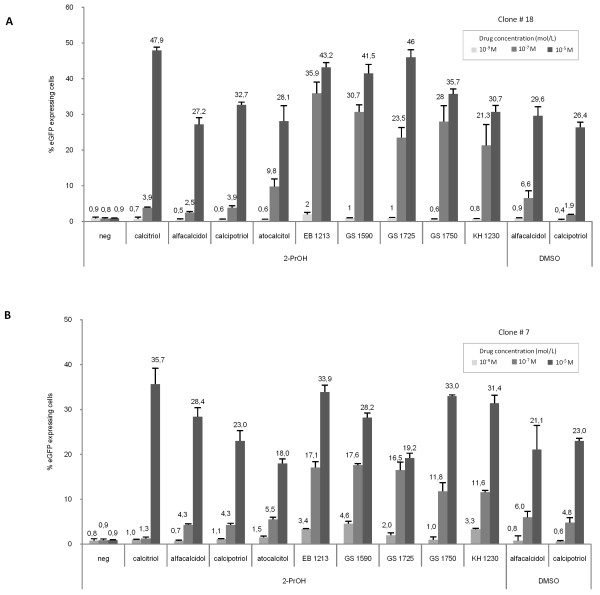Figure 4.
Sensor-based screening of 10 vitamin D3 analogues revealed compounds more potent than therapeutically approved drugs. (A) Efficacious sensor induction in clone #18. Cells derived from Clone #18 were exposed to vitamin D3 analogues at concentrations 10-9 M, 10-7 M and 10-5 M. As indicated below the chart, the vitamin D3 analogues had been dissolved in either isopropanol (2-PrOH) or DMSO. After 48 hours the percentage of d2eGFP positive cells was measured by flow cytometry. Untreated (neg) cells served as control. A clear dose-dependent outcome is visible for all drugs. The experiment was conducted in triplicate, and data are indicated as mean values ± standard deviations. (B) Sensor induction in clone #7. Cells from clone #7 were treated as described for clone #18. The overall tendency is highly similar for clone #7 and #18.

